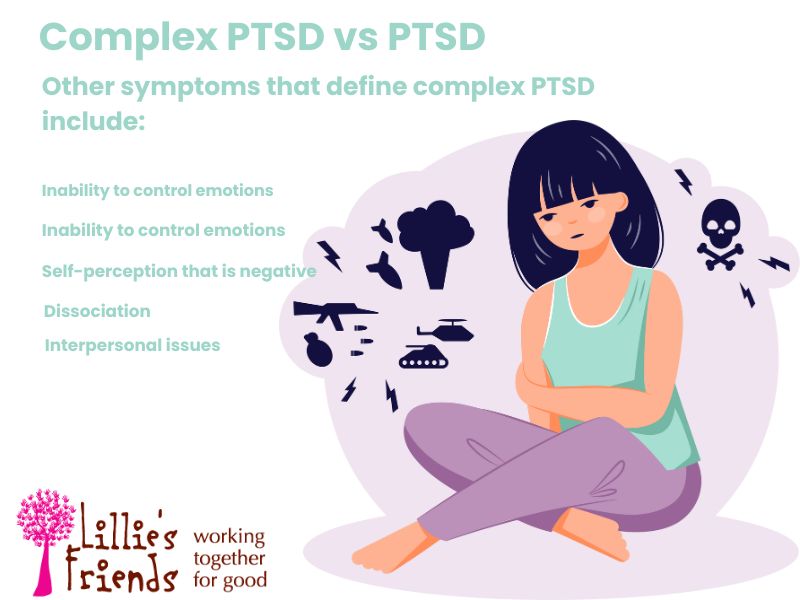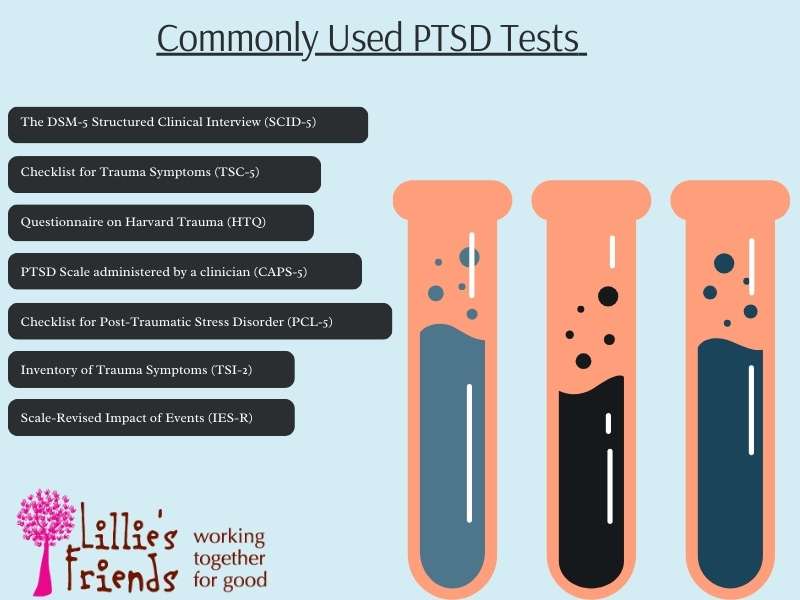Post-traumatic stress disorder (PTSD) is a mental health condition that can result from going through stressful, upsetting, and scary experiences. People with PTSD may develop complex PTSD or CPTSD if the traumatic experiences were recurrent, protracted, or complicated. It can happen during a period of natural tragedy, war, or physical or sexual assault. Intrusive memories, melancholy, anxiety, feelings of detachment, trouble controlling emotions and sustaining relationships, and changes in one’s self-perception are just a few of the symptoms that can result from CPTSD.
It is crucial to obtain a diagnosis from a licensed mental health practitioner if you are concerned that you could have CPTSD. The best way to find out if you have CPTSD is to get a comprehensive evaluation. However, you might begin by completing a difficult PTSD exam before a meeting. It can help you determine whether you could have the condition or not.
Tests for Complex PTSD Symptoms
Since it may be challenging to differentiate complex PTSD from other types of anxiety and stress, it is one of the most challenging mental illnesses to properly diagnose. An individual can get a thorough first assessment of their illness from the comfort of their home by taking a rigorous PTSD exam online.
The most widely utilized screens and diagnostics for complex trauma include
1. TSC-40, or the Trauma Symptom Checklist-40↗. It is a vital diagnostic tool for complicated PTSD. This self-report tool evaluates how a traumatic incident has affected a person’s functioning and symptoms. Complex PTSD symptoms such as traumatized cognitions, intrusive memories, avoidance and numbing, hyperarousal, and dissociation can be identified and their intensity measured with the TSC-40. The tool makes it possible to evaluate complicated PTSD more thoroughly and can help guide therapy choices.
2. SCID-5, or the Structured Clinical Interview for DSM-5↗. The SCID-5 is a semi-structured, evidence-based diagnostic interview used to evaluate the existence of DSM-5 disorders, including complex PTSD, both now and in the future. Even if the symptoms may be far in the past, the SCID-5 is quite reliable in identifying both present and historical symptoms because it is designed to provide a consistent and thorough evaluation of symptoms. The SCID-5 can be used by clinicians to accurately diagnose complicated PTSD and assist them in treating their patients by combining it with other diagnostic techniques and a thorough clinical examination.
3. The Trauma Questionnaire (HTQ) from Harvard↗. For the evaluation and diagnosis of CPTSD, it is a trustworthy and scientifically confirmed diagnostic tool. Clinical practice, research, and epidemiological studies have all made substantial use of the HTQ, a comprehensive self-report questionnaire. It evaluates the severity of PTSD in addition to other symptoms that are frequently linked to it, such as anxiety, sadness, and functional impairment. The HTQ is a special instrument for comprehending and successfully treating people who are experiencing the incapacitating effects of complicated PTSD.
4. The PTSD Scale administered by a clinician (CAPS-5)↗. Given that it evaluates a broad spectrum of symptomatology and psychosocial functioning, it is a crucial PTSD test for detecting complicated PTSD symptoms. The purpose of the CAPS-5 is to assess a patient’s PTSD symptoms, such as dissociation, avoidance, intrusive memories, emotional numbness, sleep difficulties, and other symptoms that may be suggestive of complex PTSD, as well as their frequency, intensity, and chronicity. CAPS-5 can also gauge how long a problem has been present and how it affects a person’s functioning. With its adaptability and precision in determining the existence and severity of PTSD-related problems, CAPS-5 may offer a comprehensive and in-depth view of a patient’s PTSD symptoms, assisting medical professionals in accurately diagnosing the condition and then creating a successful treatment strategy.

5. The Checklist for Post-Traumatic Stress Disorder (PCL-5)↗. It is used to determine if a person has complex PTSD symptoms based on the DSM-5 diagnostic criteria. This 20-item complex PTSD test evaluates a person’s functional difficulties in several areas, including hyperarousal, avoidance, intrusive memories, and emotional numbness. The PCL-5 is a crucial diagnostic tool for PTSD as well as for those who could exhibit symptoms that are linked to other illnesses but seem to be related to a traumatic experience. The PCL-5 aids in evaluating the entire spectrum of symptoms frequently observed in complex PTSD, as it was created with items that detect more intricate responses to traumatic experiences.
6. The TSI-2, or Trauma Symptom Inventory↗. A useful resource for taking a challenging online PTSD exam is the Trauma Symptom Inventory (TSI-2). The way this instrument evaluates general trauma-related problems makes it distinctive. It offers an overall score that may be used to determine the degree of trauma an individual has experienced in addition to measuring the various aspects of trauma symptoms. Its 136-item assessment covers a wide spectrum of trauma consequences, including anxiety, intrusive recollections, and sleep difficulties. The TSI-2 is regarded as the gold standard for identifying complicated PTSD and is a useful tool for clinicians to use when assessing and treating patients with this disease.

7. The Scale-Revised Impact of Events (IES-R)↗. It is among the most widely used self-report tools for assessing PTSD. This scale is a valid and dependable way to gauge how severe PTSD symptoms are in those who have experienced a traumatic incident. It assesses how the incident affected the person’s life in terms of hyperarousal, avoidance, and intrusive symptoms. It also evaluates how well the person is working and how well they can handle the situation. Clinicians can detect complicated PTSD in their patients and treat them effectively with the use of the IES-R.
The bottom line
Mental health practitioners frequently utilize a mix of tests, exams, and interviews to identify complex PTSD since it can be challenging to diagnose and includes symptoms that overlap with other conditions.











